Best winter cycling socks: The best options tried and tested for staving off numb feet
All the best winter and waterproof socks to keep you riding in comfort
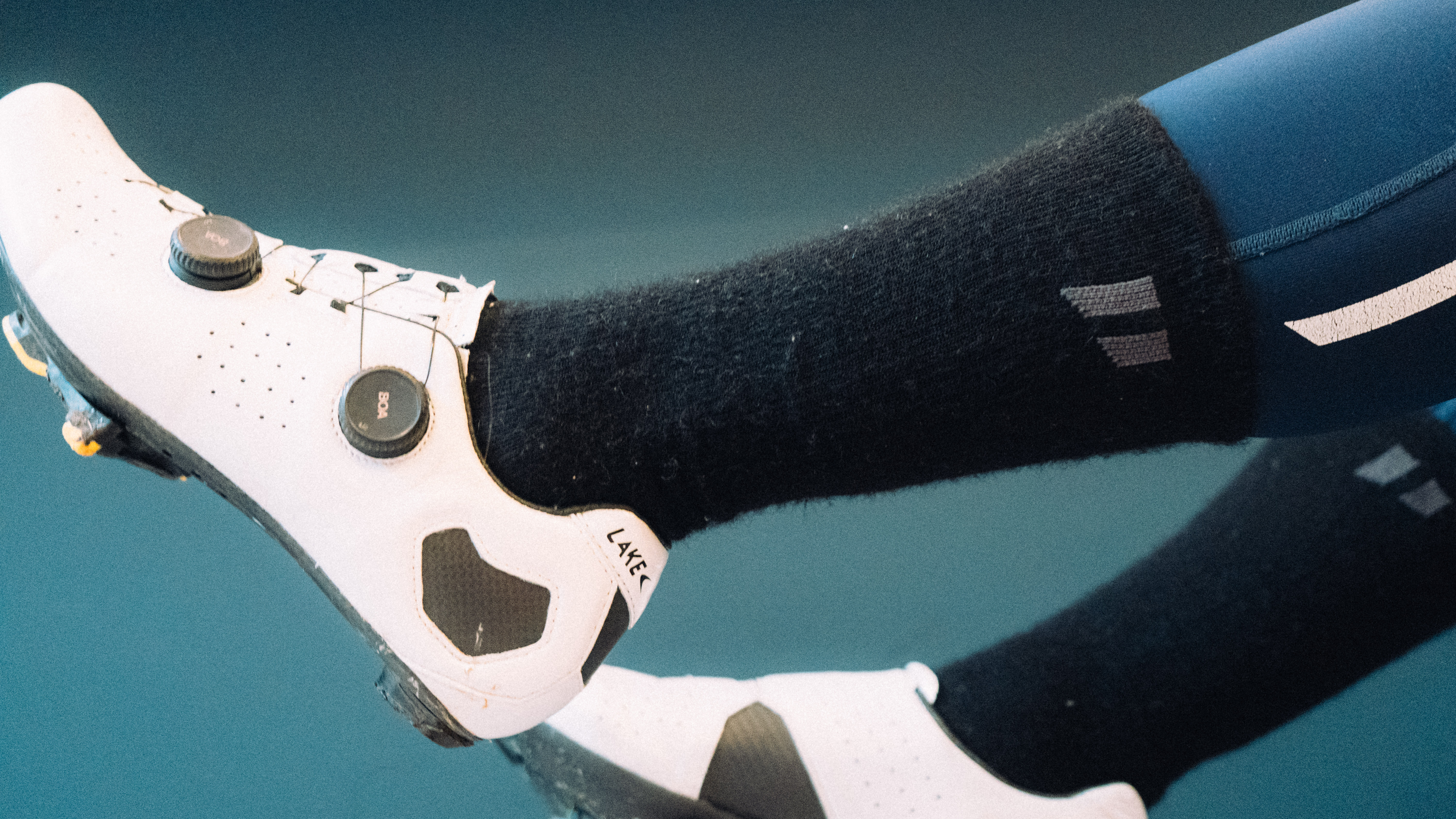
I'm going to take an educated guess that you've landed on this page because you've been riding recently and ended up with cold toes, and would like to keep your feet warm in winter. Well, you've come to the right place. I've spent years riding through the winter, and have really come to understand what it takes to keep those little pigs toasty and warm, even when it's properly miserable outside. Submerging my feet during a ride is more than a common occurrence, much to the annoyance of my bottom bracket bearings.
The trick is to not be bound by socks from cycling brands. My top pick, Hollow Crew socks are just from a general use sock brand, but they are made from alpaca wool. Likewise, my pick for the best gravel sock is from a hiking brand, and if you want to go really extreme there's a neoprene option from a sailing company.
All the socks in this list will do far better than a standard pair of socks when it's cold, wet, or both. They'll all stay up, and while they aren't necessarily the most colourful - see my guide to the best cycling socks for that - when you're already wearing a set of the best winter bib tights then you won't see them anyway. They're also not so thick that you're going to cut off vital circulation, which is key to staying warm.
For best results, pair them with a set of the best winter cycling shoes, or at the very least slip on a set of the the best cycling overshoes, valiantly tested in all weathers by my colleague, Tom.
The best winter cycling socks you can buy today
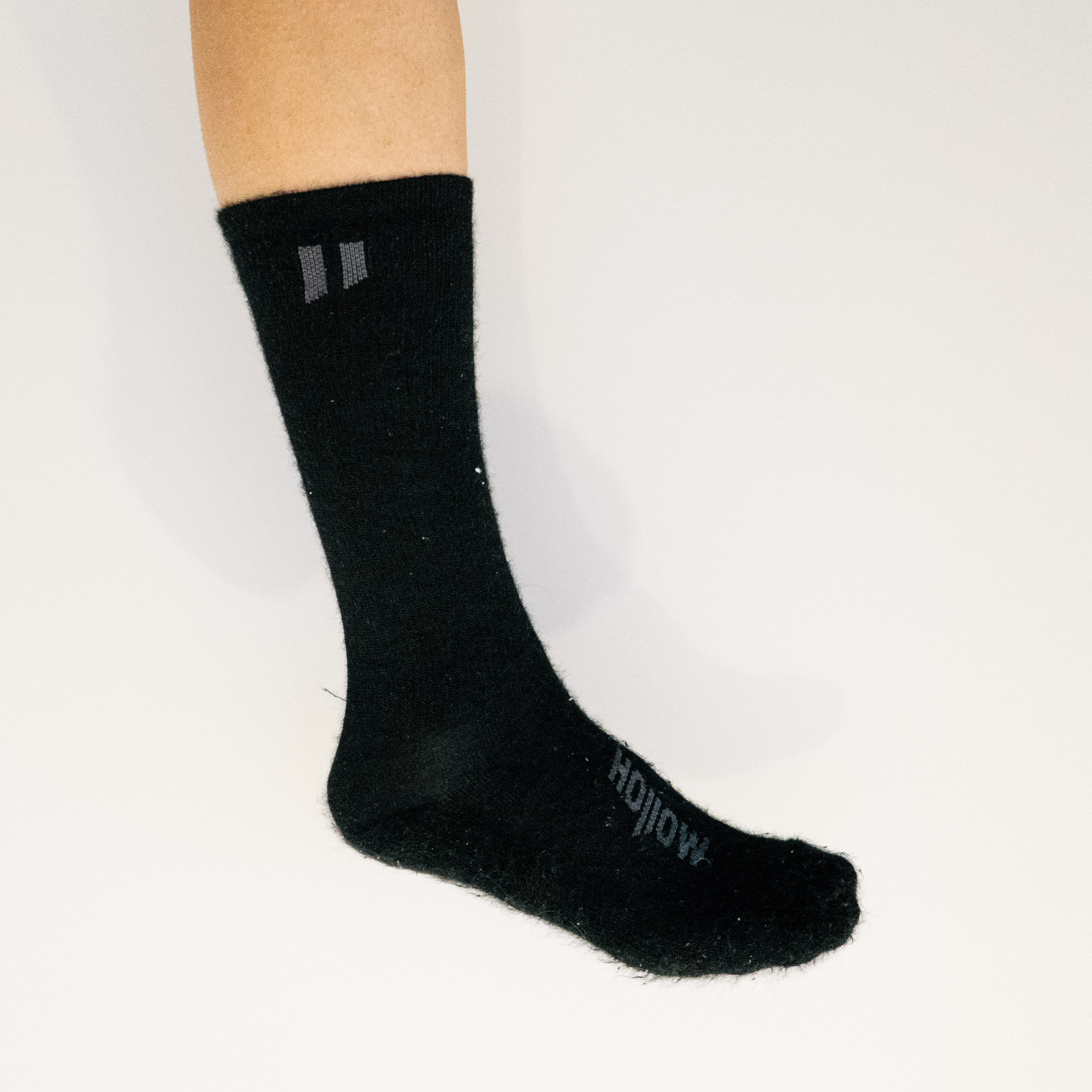
+ Incredible warmth to weight
+ Amazingly soft
- Too tall to wear without tights
The ultimate all-around winter sock for cycling, and it's not even a cycling sock. Alpaca wool fibres are hollow, so they trap more air than merino ones too, meaning the socks are warmer for the same thickness. They're also noticeably softer than most merino socks, so if you normally hate that wooly itch then give these a try. The sole is thicker and more fluffy than the tall cuff, to better insulate against cold carbon soles. Colour options are limited, but under tights it doesn't matter at all, and to be honest it makes washing them less stressful. The best thing is they work just as well off the bike too, making them better value. The crew and ankle socks are the same thickness if you want a lower height cuff, and if you really want to go for the ultimate warmth then the boot socks are even taller and thicker, though watch out if you have particularly tight cycling shoes.
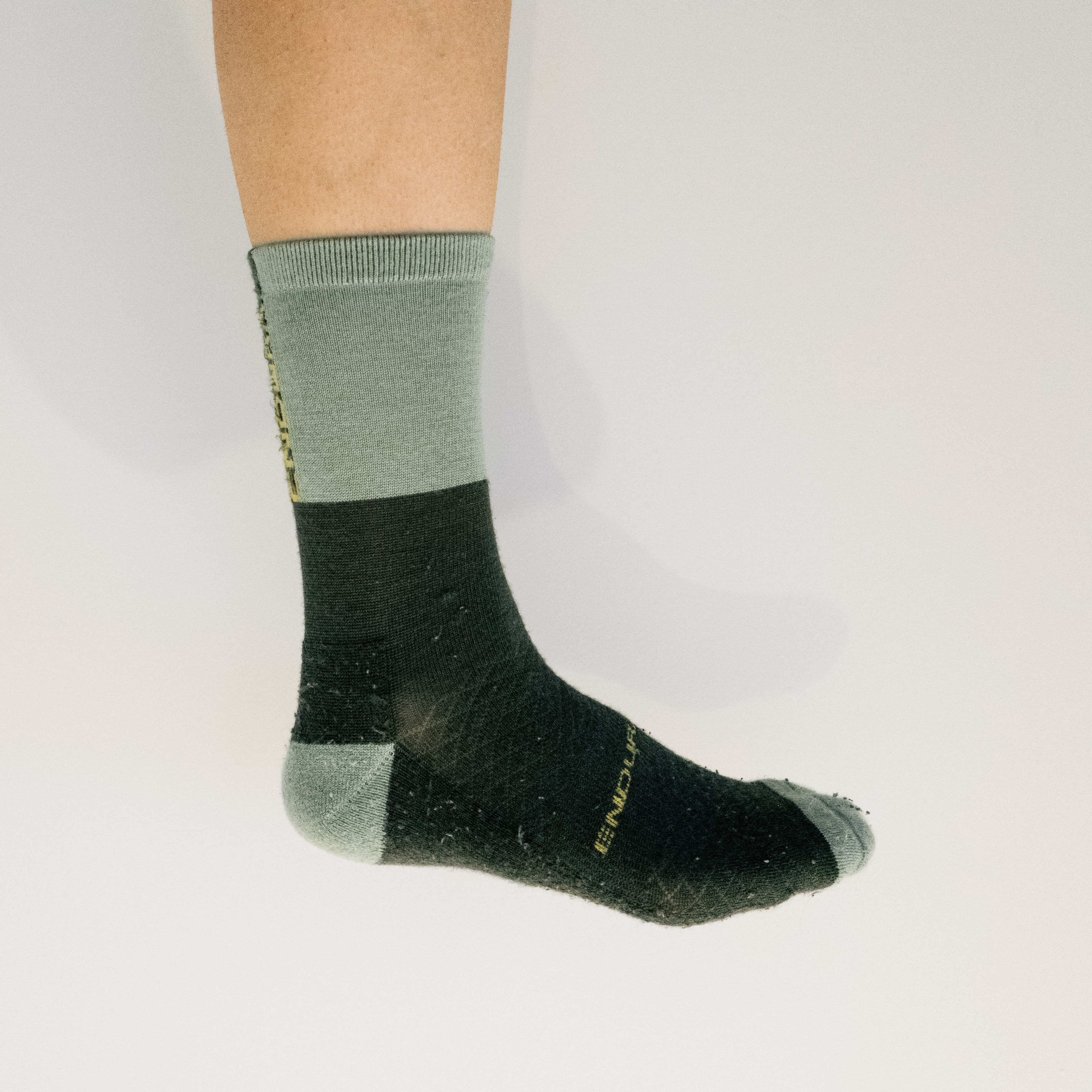
+ Decent price for merino wool
+ Plenty of colour options
- Only two sizes
The Endura BaaBaa socks come in a wide variety of colours, and while the merino content isn't huge at 37%, but it's decent for the price. The synthetic fibres mean it stays gripped to your foot like a cycling sock should, with higher pile areas on the toes and along the sole, with a lower profile cuff much like the Hollow. The BaaBaa is a much more 'normal' height for a cycling sock though, so wearing these with shorts or knee warmers is definitely on the cards, making them a useful shoulder season staple. They'd also sit below the cuff of most overshoes, which can be handy for sealing water out. They are also soft, for a wool sock; not as soft as the Hollow, but definitely not itchy. The colour selection is definitely on the gravelly end of the spectrum, but they'd not look out of place on the road. If you're particularly hard on your gravel gear then I'd go for the Smartwool option instead.
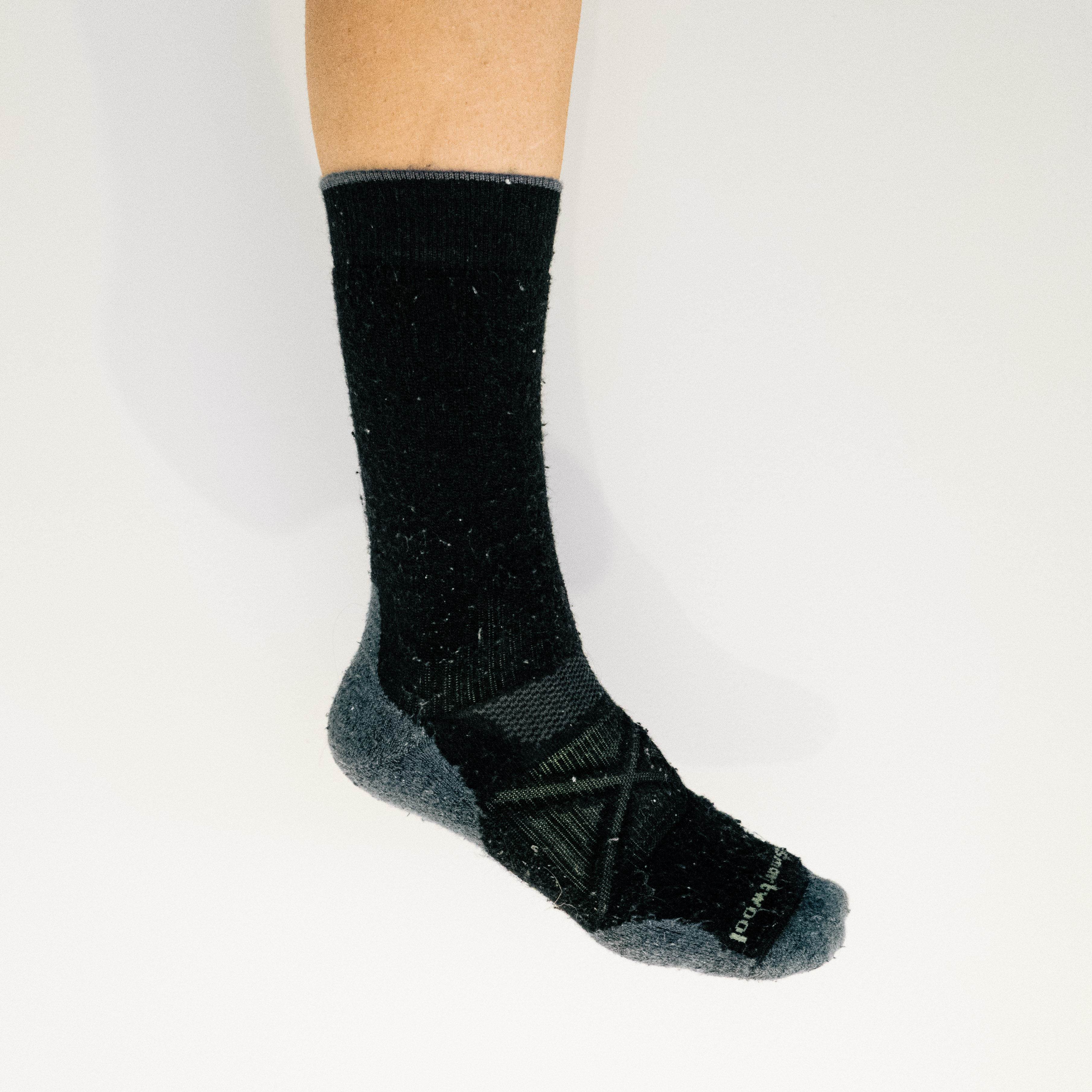
+ Absurdly durable
+ Relatively stink resistant
- Hiking aesthetics
Almost ten years ago I worked a winter in Norway outdoors on a drill rig. Before I started I spent over £100 on Smartwool socks, and since then have used them year in, year out. It remains some of the best money I've ever spent, and some of them are still going to this day. If you want something relatively warm, but able to stand up to the added abrasion and wear that comes with mud, submersion, and hike-a-bike that often comes with winter gravel riding then these are my pick. They stay pretty warm when wet, won't fall down, and they'll outlast any other sock on this list. They aren't the out and out warmest option, but much like the Hollow option, they're also just fabulous as general-purpose outdoors socks, which makes them far better value than anything cycling-specific. They might not have the cycling aesthetic - they do look like a hiking socks - but if you're going to be wearing long legs anyway it matters very little.
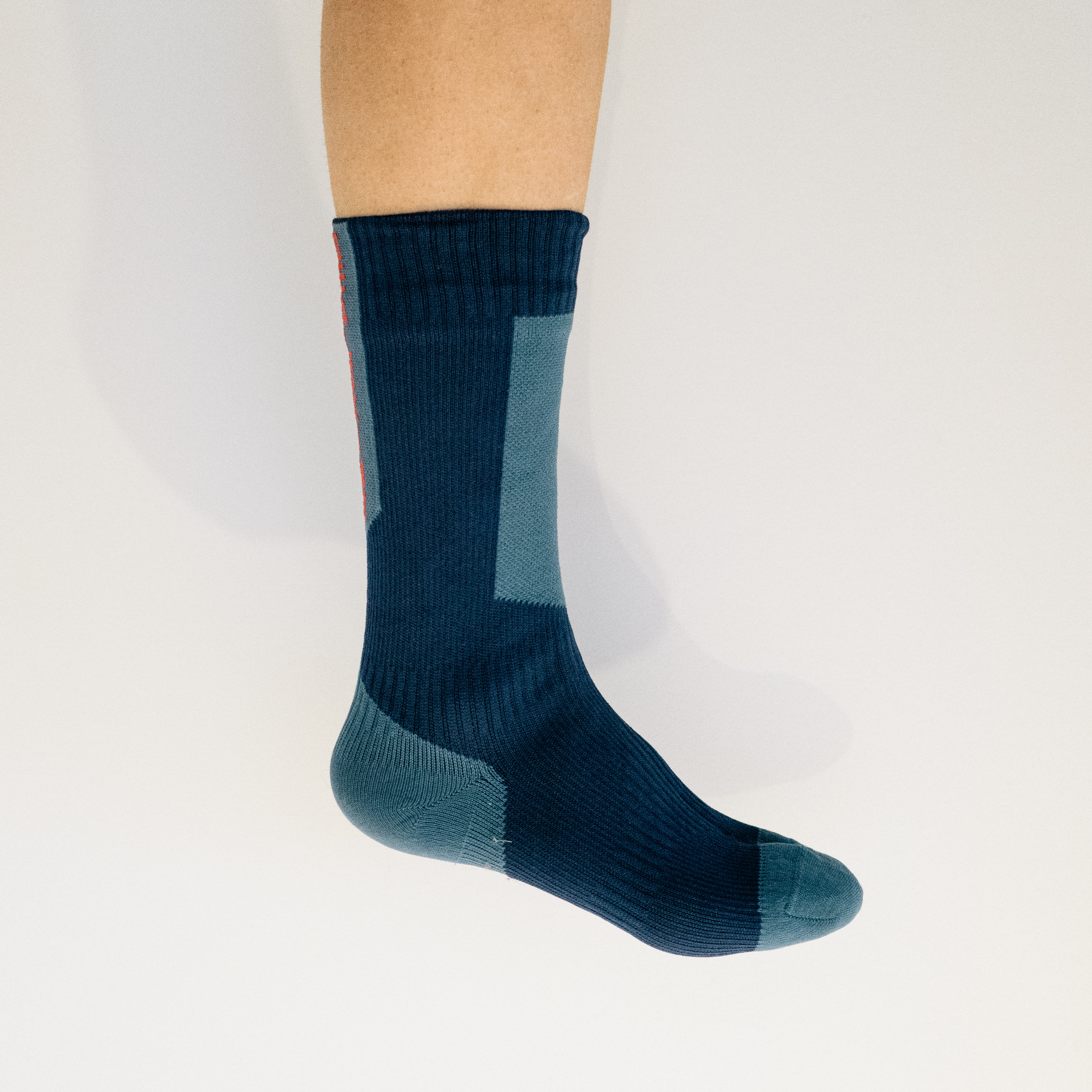
+ Waterproof, but not too bulky
+ Hydrostop stops them filling with water
- Sweaty if it isn't wet
Waterproof socks have been one of my revelations of recent years. Instead of keeping you warm by dint of the insulating properties of wool or synthetic yarn, they do so instead by creating a vapour barrier. It's much like how wearing a bin bag will keep you warm, but on a smaller scale. The main problem with many of them is that they're so bulky they don't fit in your bike shoes, and they fill with water which can't escape. These Sealskinz are thin enough to not mess with the fit of your shoes too badly, but they also have a silicone-free rubbery cuff on the inside at the top which does a relatively good job at keeping water from filling them up. The lining is also merino, for a much needed cosy boost, with nylon outer for durability. They do wonders at keeping water out, but with enough time you will get them sweaty, but warm and wet is better than cold and wet.
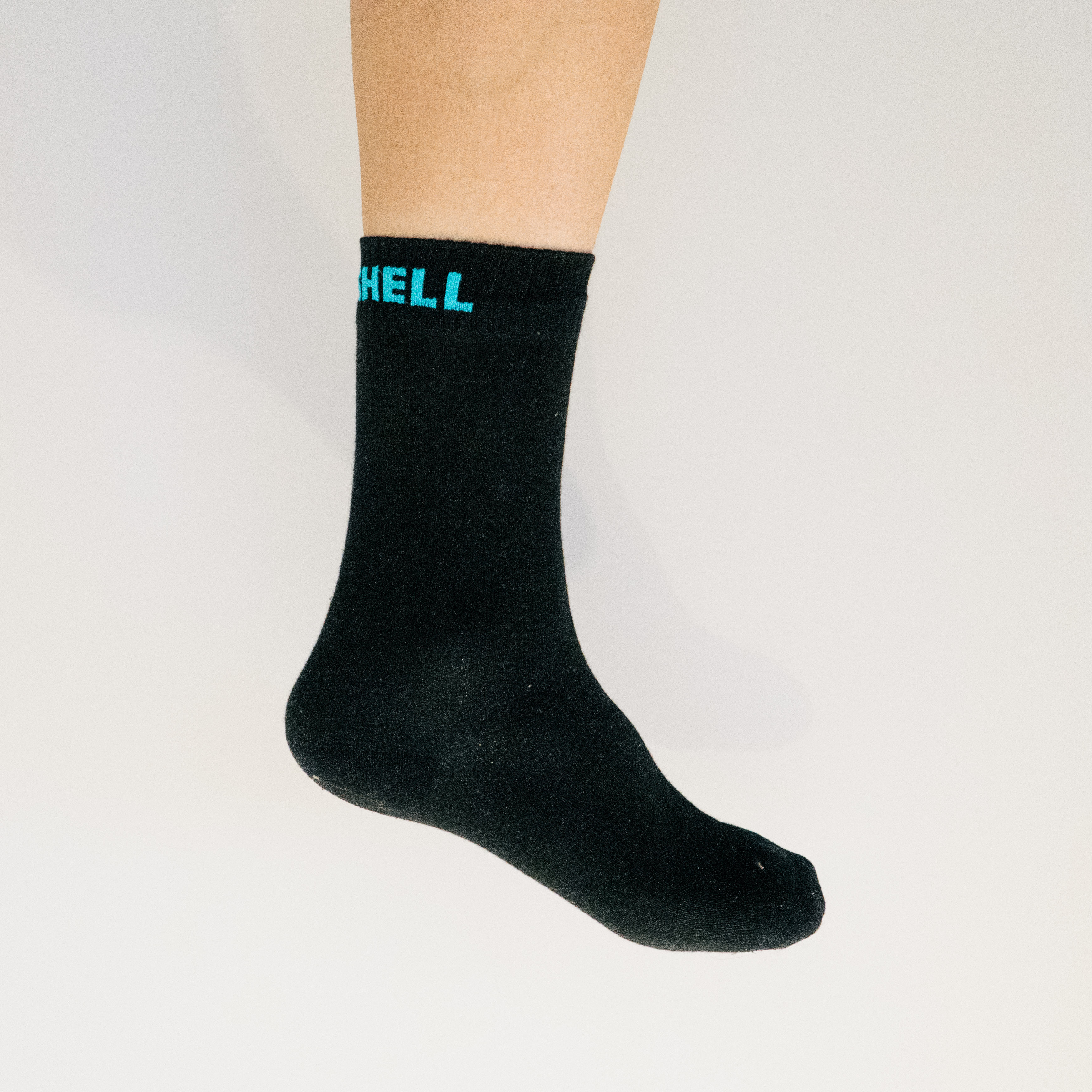
+ Impressively thin
+ Cheap for a waterproof sock
- Can fill with water
Waterproof socks are a pretty expensive investment, but these ones from DexShell are at least on the more budget-friendly side. They're super low profile, so you can easily use them with your normal cycling shoes without cutting off all circulation to your feet. In terms of keeping spray out, they do as good a job as any waterproof sock I've tried. If you wear them with shorts though I did notice they do tend to fill with water more easily than the Sealskinz option, as they don't have a special cuff to seal water out. If you're wearing tights though then that's less of a concern. Water will get in eventually, but for short rainy blasts, or to add an insulating vapour barrier beneath overshoes in dry and cold conditions they're an excellent option, and far better than wearing plastic bags on your feet as I've seen some people do in the winter.
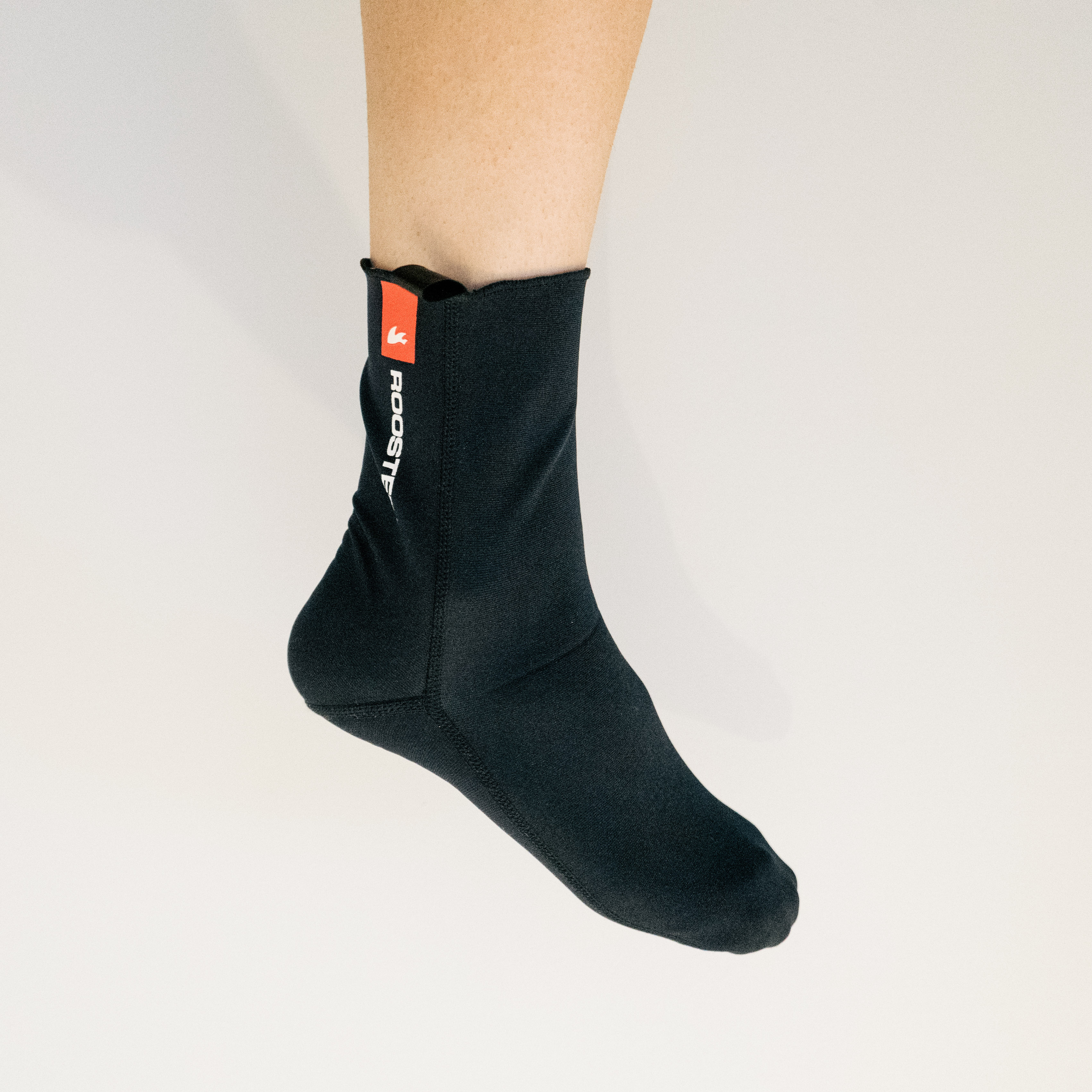
+ Wet, but warm
+ Can be layered
- You might get some funny looks
I am blessed with pretty good circulation, so even in cold weather I rarely use gloves. When I do need gloves I tend to reach for neoprene ones. If it works for hands, then why shouldn't it work for feet too. Neoprene is basically a stabilised, porous sponge that traps air, and it's been a staple of overshoes for years but it works far better when worn next to the skin. Your feet will get wet, but much like a wetsuit they will stay warm. These are from a sailing brand, so designed to keep toes warm in ocean spray and high winds, so more than a match for the weekly club run in the rain. If you know you're going to get soaked anyway then you can even pre-heat them in warm water too. I'm not normally an advocate for wearing 2x pairs of socks, but these are so thin that in combo with something like the Hollow you still have a sock that's less bulky than a big waterproof option. They do have two pull tabs, but you can just snip em off, and if you like these then Rooster does make a super thick 4mm version, but you will need larger shoes for them.
How to choose the best winter cycling socks for you
While this list encompasses my favourite options, there are myriad others out there, and forewarned is forearmed. With that in mind, I’m going to attempt to answer some common winter sock FAQs so that, if none of these options take your fancy, you can still make informed purchasing decisions, and ultimately have a better riding experience.
What are the warmest winter cycling socks?
For general use I find the Hollow socks to be the warmest, particularly for the thickness of them. The hollow fibres trap more air, and the sole is lovely and lofted to keep the foot away from cold carbon shoes. In the dry, unless you're suffering from particularly chilly feet, they'd cover you for more or less all winter conditions. If they get too cold it's probably time to start adding winter overshoes, or investing in a dedicated set of winter shoes.
When things get wet it gets more tricky. Wool gets soggy, but does still retain its insulatory qualities, but I find the wind chill factor increases vastly regardless. Waterproof socks like the Sealskinz Briston work wonders by adding a solid membrane barrier; your feet will still get wet with your own sweat, but they'll be far better insulated from the wind chill and so will feel warmer. Even when it's not raining they're a great idea to try if you are forever suffering with numb toes.
If you can't stand the idea of sweaty feet in what is essentially a plastic bag then hang up your preconceptions and chuck on some neoprene socks and see if they help. You'll get wet, but like a wetsuit you'll be warmer.
How long should winter cycling socks be?
If it's cold enough for winter socks, you'll probably be wearing winter bib tights, so while mid-calf may be fashionable for summer socks, it's less of an issue if your socks stretch up to your knees. The UCI sock police won't catch you either.
A longer sock will insulate your legs more, so more warm blood should find its way to your feet. You can still just about find knee-high Rapha deep winter socks, but they're overkill in my view.
One thing to bear in mind is where they sit in relation to the cuff of your overshoes. If they're higher they can aid in wicking water down into your shoes, but this is only really relevant if you're wearing overshoes with shorts.
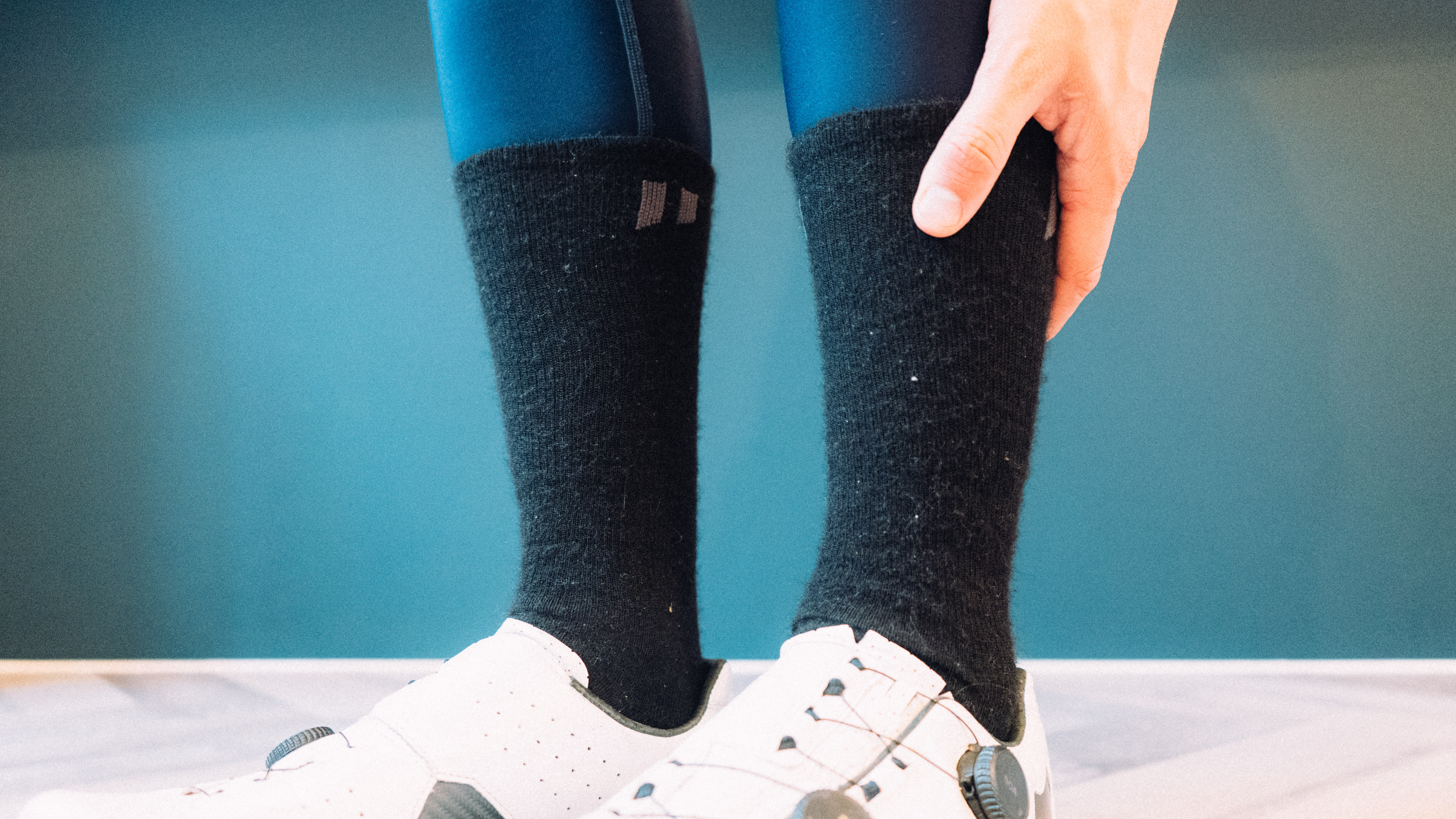
How do you keep your feet warm cycling?
Luckily for you, we have a whole guide on how to keep your feet warm while cycling. The trick is keeping your feet warm and dry, as well as uncompressed. This means a decent set of winter cycling socks, paired with some winter cycling shoes or overshoes, and not doubling up on socks.
Winter shoes or overshoes have the additional benefit of adding a windproof outer layer, so even if your feet do get wet, the water will be close to body heat rather than freezing. Once they get wet, they probably won't dry out again though.
Dryness is key, and while overshoes or winter cycling shoes do an admirable job, as do waterproof cycling socks, nothing beats a full set of mudguards.
If you can't keep your feet dry, then keeping your toes insulated with neoprene or out of the wind with a waterproof membrane will do wonders for your comfort.
Don't forget though that all the blood going to your feet comes from your core, and if that is cold then your extremities will suffer. A decent winter cycling jacket and a winter base layer can be as effective at keeping your feet warm as any pair of socks.
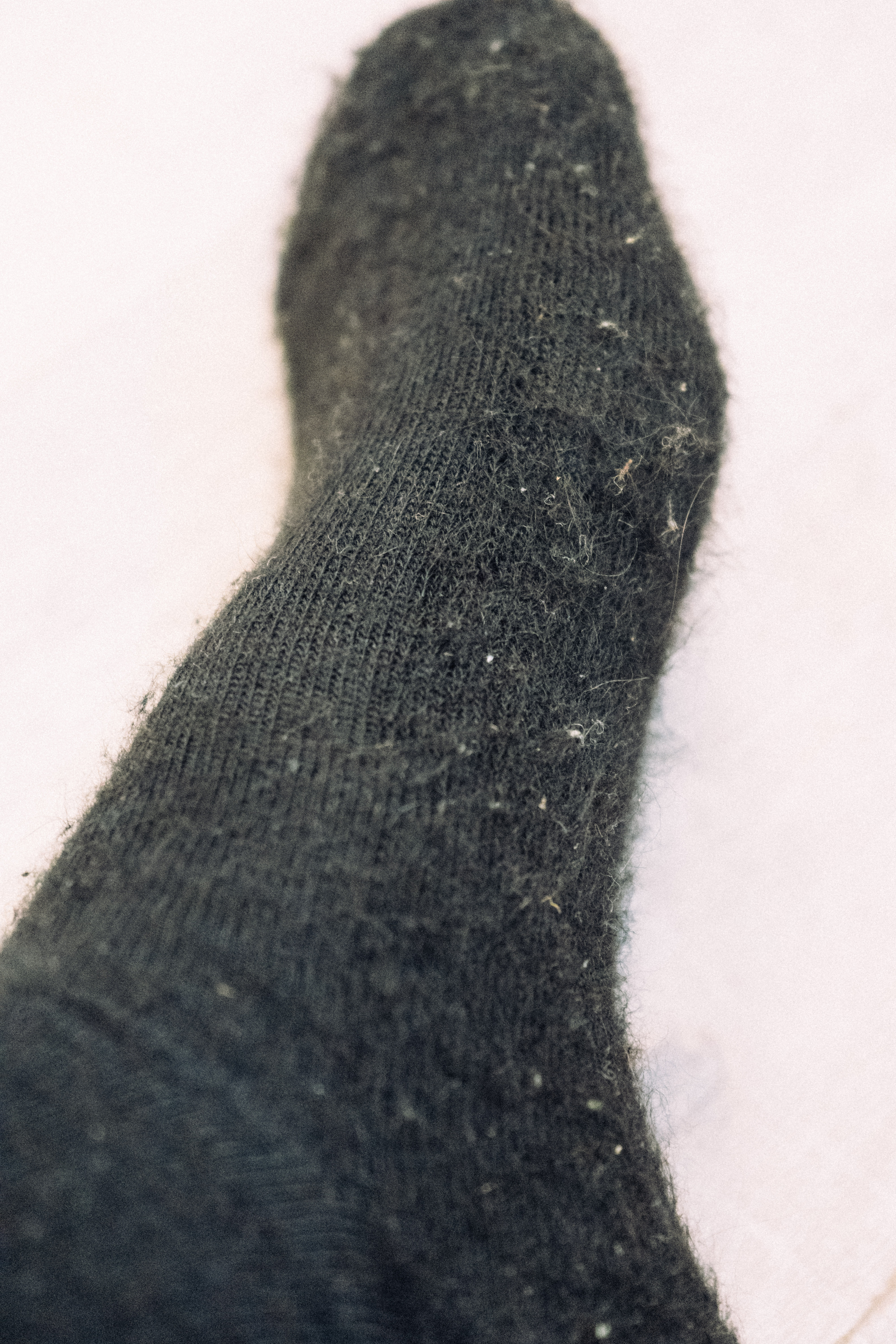
What is the best material for cycling socks?
Wool does a marvellous job of insulating, far better for the same weight than synthetic options. It’s also sturdy, and breathable. Merino wool even more so, and it has the added benefit of being slightly antibacterial, cutting down on the stink a little bit; you'll still have to wash them, though! Alpaca wool is better still in my experience, though far harder to come by.
Wool also stays reasonably warm even when it gets wet, which is a valuable property when you can expect your feet to get wet from road spray, even if you don't end up wading through puddles or mud.
If you want a more insulating sock then look for a higher wool content, but there needs to be some elastane and other fibres to provide stretch and the next-to-skin fit that we all want in a sock. Also, a thicker wool sock with a lower wool content may well be warmer than a thinner one with higher wool content.
Does wearing two pairs of socks keep your feet warmer?
No. If you wear two pairs of socks you’re going to compress your feet. This leads to a reduction in circulation, meaning nice warm blood is cut off from reaching your feet and ultimately you’ll probably end up with colder feet than if you just wore one pair of socks.
If you want to add more insulation than a set of winter socks can provide then opt for a set of cycling overshoes that slip over your cycling shoes. These are usually constructed from neoprene and also help keep water away from your skin.
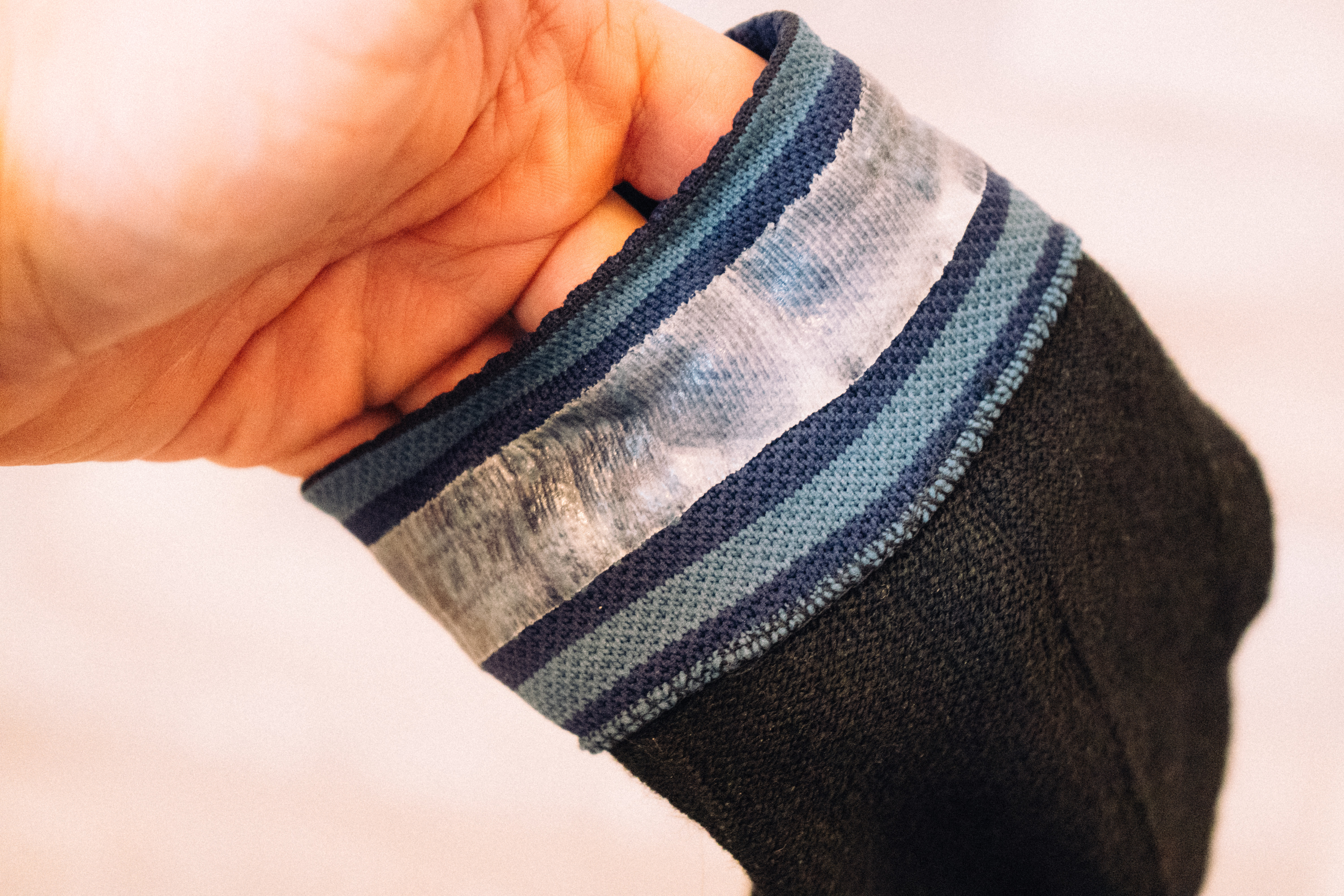
Do I need waterproof cycling socks?
Waterproof socks do a remarkable job of keeping your feet dry. They have two layers of fabric, with a waterproof membrane sandwiched between them. They do feel quite stiff and thick, and they’re not going to be as breathable as a normal sock, but particularly for gravel riding through puddles where you can’t really wear overshoes for fear of shredding the bases, they’re an excellent option.
For really cold days they can also act as a warmer option, if you don’t mind getting a bit sweaty. The membrane, though nominally breathable, is akin to wrapping your feet in a plastic bag. This seals the heat in and creates a little microclimate. Neoprene also is a slightly rogue option here from the world of sailing. It's more breathable, but porous, meaning you'll get wet but should stay warmer than with any wool sock.
If you want the ultimate in dry feet then remember to add mudguards. They may not be fashionable, but they are hugely effective.
Do socks go under or over leg warmers?
The biggest debate in cycling, and we’re not going to alienate half our readership by coming down on one side or the other. The fence is actually very comfortable to sit on.
Personally, I mix it up. If it’s cold and dry then I go over to show off my socks, if it’s wet I keep them under so they don’t get filthy. With waterproof socks especially it's best that they go under your tights or leg warmers, meaning any water actually dripping down the legs winds up on the outside of the membrane, rather than channelling it directly into your shoe.
How do we test winter cycling socks?
This guide has a good few years of winter testing behind it now, and I've tested upwards of 25 pairs to distill the market down into what I think are the best options. As I'm out in all weathers anyway testing winter gear I'm always trying new socks.
I've regularly submerged my feet, tested waterproof socks to the limit (I'll spare you the video of me emptying them of water), and gone out in freezing conditions to see which ones cut the mustard. The video below is far from atypical. I don't actually own any winter cycling shoes, so I'm fully motivated by making sure the internal insulation is as good as it can be, or else I'll have a bad time.
As I mentioned in the intro to this guide I'm not wedded to cycling socks in the winter. My background is as a field geologist and I learned a great deal about keeping my feet warm working in subarctic Norway through the winter. You don't have to stick to cycling brands, and I'd actually suggest you shouldn't for the most part when the conditions are very cold and wet.
A post shared by Will Jones (@zetlandcycles)
A photo posted by on
Get The Leadout Newsletter
The latest race content, interviews, features, reviews and expert buying guides, direct to your inbox!

Will joined the Cyclingnews team as a reviews writer in 2022, having previously written for Cyclist, BikeRadar and Advntr. He’s tried his hand at most cycling disciplines, from the standard mix of road, gravel, and mountain bike, to the more unusual like bike polo and tracklocross. He’s made his own bike frames, covered tech news from the biggest races on the planet, and published countless premium galleries thanks to his excellent photographic eye. Also, given he doesn’t ever ride indoors he’s become a real expert on foul-weather riding gear. His collection of bikes is a real smorgasbord, with everything from vintage-style steel tourers through to superlight flat bar hill climb machines.